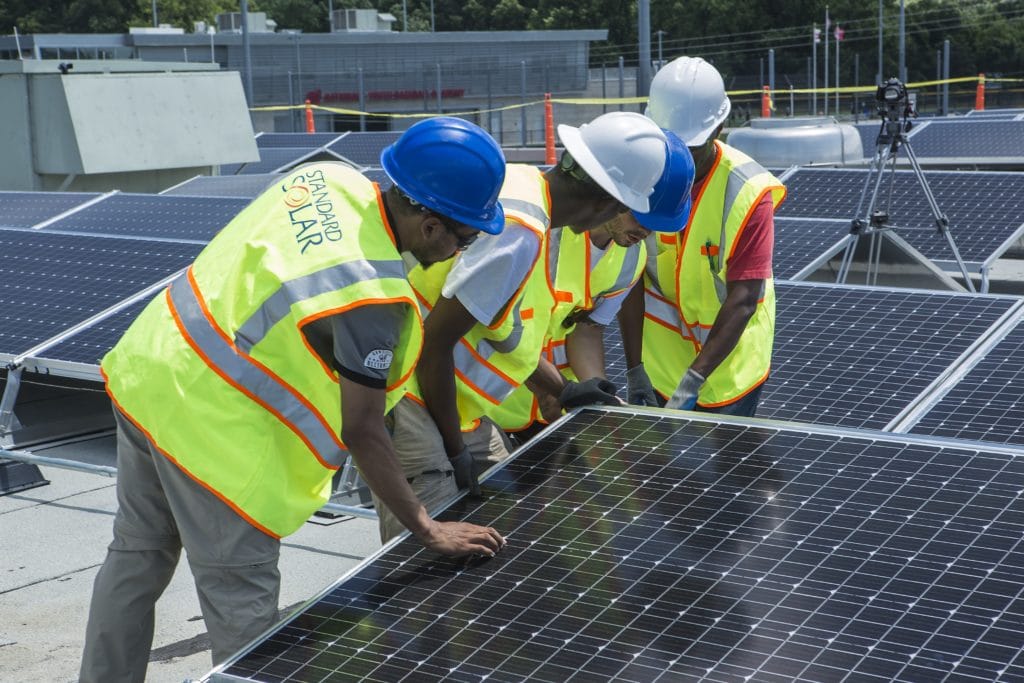One of the few truly bipartisan aspects of the nation’s shift to renewable energy is the broad agreement that it should not come at the expense of workers who rely on jobs in fossil fuels and traditional automobile production for their livelihoods.
In early March, Sens. Joe Manchin (D-W.Va.) and Debbie Stabenow (D-Mich.) introduced legislation that would use $8 billion in federal funds to bring clean energy manufacturing and recycling to former fossil fuel sites. One goal of the bills is to help transition workers to jobs in the clean energy sector.
While this legislation is a start, the full transition will take more than just one piece of legislation.
To understand the scope of the effort, pv magazine USA sat down with Suzanne Leta, head of policy and strategy at SunPower, and a member of the Solar Energy Industries Association (SEIA) Board of Directors.

“We, as a country, need to first focus on ensuring that we grow demand for clean energy, especially distributed solar and storage,” said Leta.
While manufacturing and recycling are important aspects of PV and the renewable industry as a whole, keeping up demand for residential and commercial solar projects is critical. According to Leta, installers and developers make up more than two-thirds of the roughly 250,000 jobs in the solar industry, and roughly 75% of that workforce is involved in distributed energy in some capacity.
Reducing upfront costs
Leta said that demand for solar will be sustained first by a long-term extension of the Investment Tax Credit (ITC). The ITC has historically spurred project development, and a long-term extension would bolster demand. And any distributed solar installation looking to claim the ITC must use a fully-American workforce, which Leta sees as a potential pipeline for fossil fuel workers.
“The main benefit of a long-term ITC is that it reduces the upfront cost” of a solar array installation, she said. Reducing upfront costs can prompt investment from a wider range of customers and opens up accessibility to those who otherwise may not have be able to afford an installation.
A critical related element is net metering, a credit that many homeowners rely on to get the maximum value out of their solar system and one which has been a target for utilities and legislators.
“Net energy metering is fundamental to customer economics,” said Leta.
Another important aspect of ITC extension, and one that Leta said has been under-recognized, is the need for parity between section 25-D of the tax code, which is for individuals, and section 48, which is for corporations.
As it stands, the value of the ITC is at a permanent 10% for corporations under section 48, but drops to 0% for individuals, starting in 2024, under section 25-D.
Leta said that around 70% of the U.S. residential market is sold through cash and loans. And many of these sales depend on the 25-D benefit. Allowing it to fall to 0% by mid-decade could cut accessibility for potential customers. Extending the ITC for individuals under section 25-D is critical to sustaining customer ownership, which also helps with housing affordability, Leta said.
Then, too, making the ITC permanent for corporations but eliminating it for individuals shows a bias toward one type of customer. That bias may hinder the goal of sustaining solar demand and, ultimately, impact the goal of keeping people employed and supporting broad workforce goals for former fossil industry workers.
“Don’t get me wrong: we need a long-term ITC extension for both,” Leta said. “We just want to make sure that it’s truly equal.”
This content is protected by copyright and may not be reused. If you want to cooperate with us and would like to reuse some of our content, please contact: editors@pv-magazine.com.









This all sounds extremely self-serving. There are so many better ways to encourage solar development outside of the tax system. In California we simply mandate solar on new construction. Adding solar to a home at the time of construction (or later) is sorta like forcing cars to have seat belts because it makes for a safer and/or (ahem) more resilient living space… Does anyone else hate bingo words like resiliency that mean anything you want them to mean?
Do we need tax credits for 70 inch TVs? NO!!! We buy them because we want them. Solar should be something we buy because we want it.
Have you seen Bill Maher lately… He’s up to something like 1200 days trying to get his PV system connected. Making solar easier to install is what we should focus our attention on.
One could argue the ITC has resulted in higher system costs and this incentive structure has largely been a handout to Wall Street… Look at who profits from the ITC and the list goes: JP Morgan, Goldman Sachs, Capital One etc.